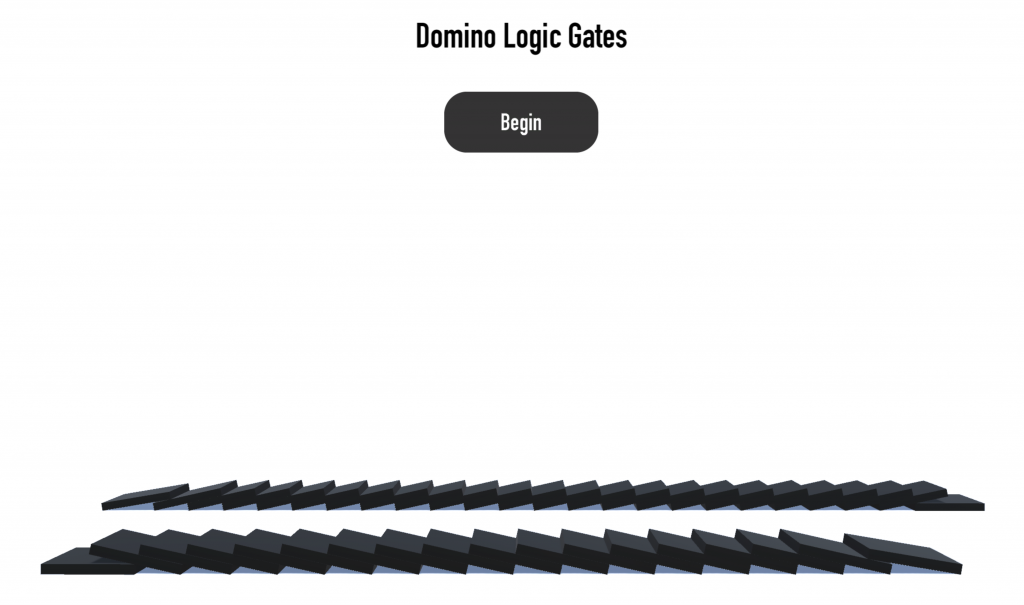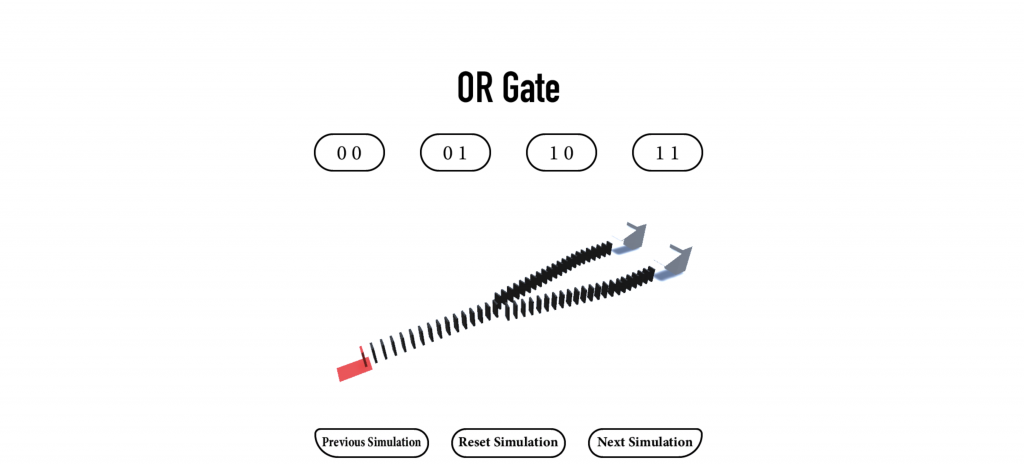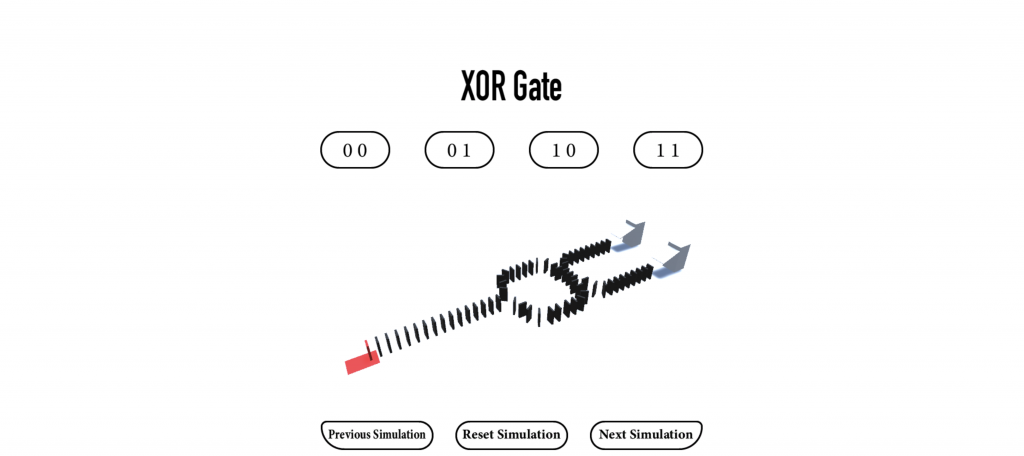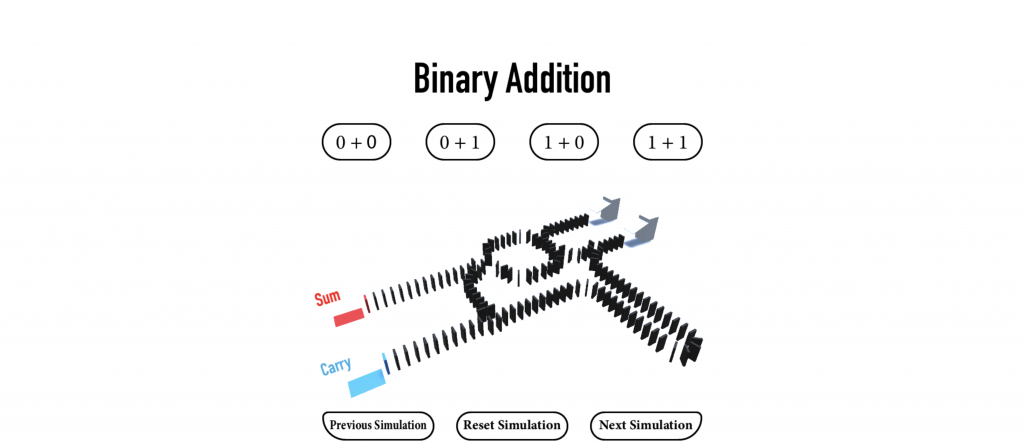
I am a research associate and learning technologist at Goldsmiths, University of London and working in partnership with University of London and Coursera to develop game-based learning activities. These tools are aimed at students and learners with the attempt of offering interactive and playful ways to study and understand a variety of Computer Science topics.
© 2020 Goldsmiths, University of London
All rights reserved. No part of this publication may be reproduced, distributed, or transmitted in any form or by any means without the prior written permission of the publisher, except in the case of brief quotations embodied in critical reviews and certain other noncommercial uses permitted by copyright law.
Game Type
The “Domino Logic Gates” interactive learning environment is an Physics-Based Simulation which attempts to abstract the complexity of a system with the use of simple and ordinary objects.
This is a learning based simulation but should be integrated with additional resources previous to exploring it.
Description
Logic circuits are a central concept in understanding how computers and electronics work on the background. Despite computers perform really basic operations, it is really a challenge for humans to understand a system which computes millions of instructions per second. It is even more challenging to think that these operations are executed by electricity flowing around a maze of tiny little electronic components known as transistors. Against this background, it is extremely hard to explain the concept and abstraction behind logic gates without the aid of concrete systems. The “Domino Logic Gates” simulation is an interactive learning environment aimed at better understanding the complexity of how computers deal with logic gate operations and binary additions. In fact, each logic gate operation can be simulated using real domino blocks arranged in a specific pattern. Using the power of Unity built in physics, this simulation explores the behaviour of the AND, OR, and XOR logic gates and shows how a 2 bit binary addition can be represented with the combination of a small set of logic gates.
Terminal Learning Objectives
This interactive learning environment has the following TLO:
- Create an abstract mental model of computer logic gates
- Understand the 2 bit AND logic gate input and output
- Understand the 2 bit OR logic gate input and output
- Understand the 2 bit XOR logic gate input and output
- Understand the 2 bit binary addition by combining the AND and XOR logic gates
Game Design Values
- Experience: The “Domino Logic Gates” is an Physics-Based Simulation which allows the users to partially visualise the complexity of computers logic with the use of virtual domino pieces.
- Theme: Simulation and Experience-based learning.
- Point of View: The “Domino Logic Gates” is presented from a top-down, isometric perspective. The graphics are minimal but offers a concrete understanding of the system. Users can navigate different instances of the simulation, play, stop, and reset each with appropriate UI buttons.
- Challenge: There are no challenges in this simulation.
- Decision-making: There are no real time decisions to be made. Users can navigate the simulation at their pace.
- Skill, strategy, chance, and uncertainty: There are no skills, elements of uncertainty, or particular strategies required in this simulation. Users can attempt to predict the result prior to running the system.
- Context: The simulation is run as a web application. It has been used as part of interactive formative learning material on E-learning platforms like Coursera.
- Emotions: The “Domino Logic Gates” is meant to generate a feeling of discovery and excitement.



